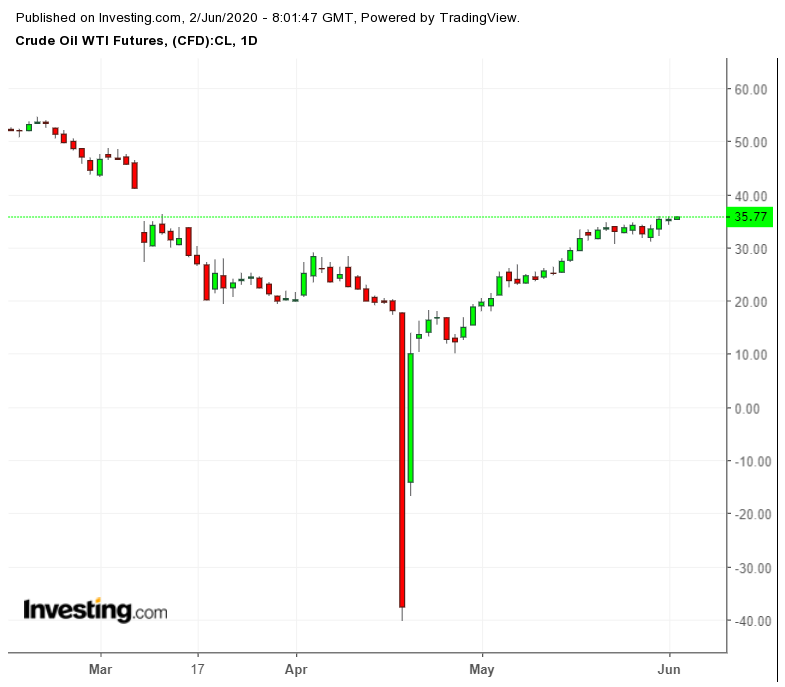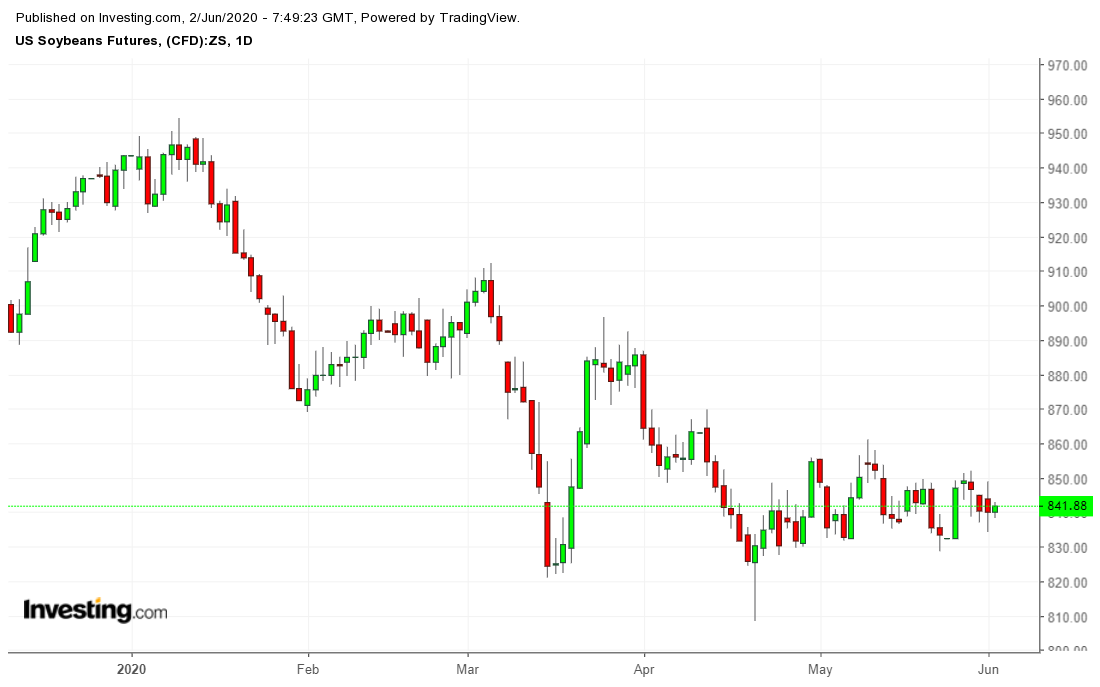
China has begun to flaunt Donald Trump over trade threats, but the measured response by the respective commodity markets suggests that investors are playing it sensibly rather than swallowing theatricality on both sides.
After weeks of claiming how unhappy he was with China over a deal with the US with COVID-19, Trump — several times to threaten to walk away from the much-awaited phase one trade agreement between the two countries Slapping ended his performance on Friday with Beijing on the wrist instead of Hong Kong. Stocks on Wall Street rose to a relief rally, as did crude oil on NYMEX.
But China was not done with that. Beijing told state-owned firms over the weekend to block purchases of soybeans and pork from the United States, Reuters cited two people familiar with the matter.
A source said that Chinese importers had raised 10,000 to 20,000 tonnes to the U.S. Pork shipments have been canceled - equivalent to nearly a week of orders in recent months - following Trump's comments on Friday.
Sources said China is ready to stop imports of more agricultural products from the United States if Washington takes more action on Hong Kong.
In response to Trump's threat on Friday to end special treatment to punish Beijing in Hong Kong, the state's purchase of large amounts of American corn and cotton was also halted.
China has purchased soybeans, corn, wheat and soybeans from the United States this year to fulfill its commitment under the trade agreement. African boar fever left their pig herd devastated, with Beijing also advancing the purchase of American pork.
The US Department of Agriculture reported that China purchased $ 1.028 billion of soybeans and $ 691 million of pork in the first quarter of 2020.
China promised to buy an additional $ 32 billion in US agricultural products over two years based on 2017 data under the initial trade deal for the two countries signed in January.
If Trump continued to target China, it was not bought
In the worst case, if Trump continues to target China, Beijing will have to cancel the phase one trade deal, a second source familiar with the government's plan said.
The person explained, "When there are frequent attacks from Trump, Beijing cannot buy goods from the US."
The news did little to tame the markets in Monday's trade.
"Should we prepare for another sequel? I've lost count on the point that it could be ... three, six, maybe eight, all of them have started blurring together by now, "Dan Huber of St. Charles, Illinois-based Huber Report, Mentioned, Trump promised to respond to strict sanctions imposed by China if it took drastic action on Hong Kong.Huber added:
China has already commented that if these are serious, they will retaliate by reducing purchases from the United States, and to suspend the purchase of American agricultural goods to the already state-owned grain companies, COFCO and Synograin. Have given instructions
"Of course, no one has defined what 'serious' can mean, so we'll have to wait to see how it unfolds in the coming days."
Jeffrey Haley, senior market analyst at OANDA in New York, has the same thesis.
But the china threat is only a blip, say something
Hailey stated that the U.S. China's state-owned buyers only got a nap overnight to stop the purchase of soybeans and pork because "similar orders were not issued to private companies".
she added:
And this exercise, along with the recent reform of the PBOC USD / CNY, appears as a shot in the US bow over Hong Kong, and not an imminent threat of retreat from the US-China trade agreement. Surely, anyone will help in these difficult times. "

On the Chicago Board of Trade, soybean futures declined by 1.8% on Monday, 3.4% trough of April and 0.9% slide in March - all 0.5% below the disruption caused by the epidemic.
By Tuesday morning trading in Asia, however, soy futures rose enough to return to the green lane.
"China remains a very active buyer in South America, even as it has increased soybean purchases here in the US, so the total amount taken from the US may not match the trade expectations," Jack Scoville, agriculture The Vice President Price Futures Group in Chicago wrote in its Monday note.
Scoville is among those not buying the China-will-U.S.-soy story:
Brazil's prices have been creeping higher for the rest of the world as it runs out of soybeans to export, so China and the rest of the world will look to the US and Argentina for additional supplies. "
Even technically, the U.S. Soya may have some other opposite. Hovering at $ 8.4238 per bushel on Tuesday, Investing.com's Daily Technical Outlook tagged the July CBOT soybean as "neutral". But with a top-end resistance of $ 8.6272, it still leaves the contract with room for 20 cents or 2.4%.
CBOT's lean-to-futures, which act as a gauge of Chinese pork purchases, fell 4% on Monday, as trade commenced for June

That extended a 4% decline for United States hogs in May, accusing the back of concerns about meat plant closures due to the COVID-19 outbreak. In fact, CBOT hog futures crawled from a large hole only a month earlier, with a 13% drop in April, due to an epidemic caused by a 16% drop in March.
At a price of 55.30 cents a pound on Monday, CBOT Lean Hogs was labeled "Strong Sale" by Investing.com. Nevertheless, with the maximum forecast for the benchmark July contract at 58.22, the market is still expected to post a 5% gain in the near term.
Even if thin skinny people were to fall in the next few months, the U.S. instead of China This could be more to change the demand and market dynamics, Scoville of Price Futures Group said.
"The backlog of cattle and hogs will gradually disappear under this scenario and wholesale and retail prices will decline," Scoville said. "It will take some time, but it is starting to pass."
In the case of corn, CBOT July futures slipped 0.6% on Monday before rebounding 0.1% on Monday. Investing.com has a "Strong Buy" on July Corn at $ 3.2362 per bushel and a maximum resistance of $ 3.3609. This means that another 12.47 cents or 4% has potential.
Along with Cotton, Investing.com has a "strong buy" for the July futures contract at 60.24 cents per pound, with a maximum of 64.47 cents - or room with a 7% increase.
nice post
ReplyDelete